Running workshops isn’t just about a series of activities you guide a group through — it’s about driving strategic outcomes. To help set you up for success, this article expands on why you need to stop thinking like a follower and start thinking like a strategic designer and offers three examples of workshops I use in my work that drive a lot of value.
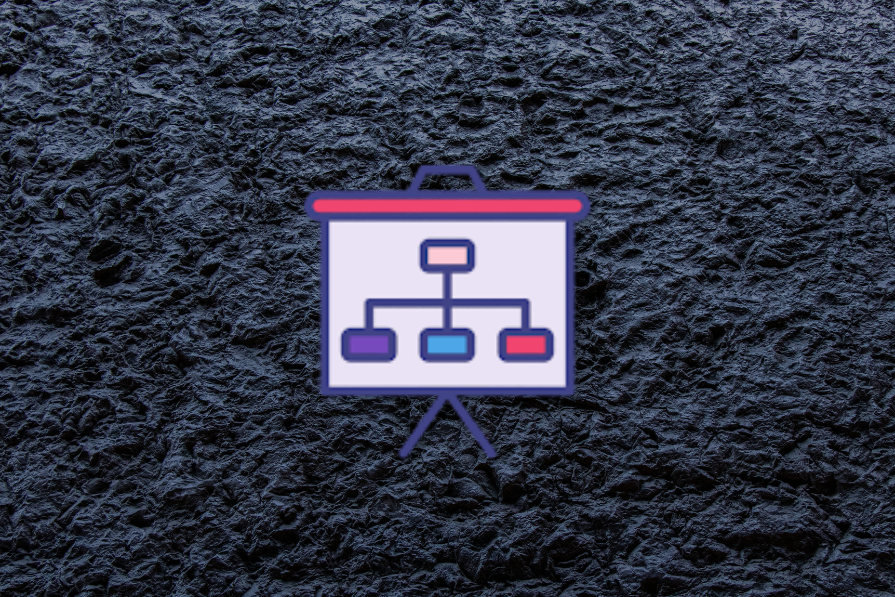
Let’s imagine this. You’re dealing with stakeholders that are pulling you in different directions on a major product initiative. Marketing wants feature A, engineering is questioning the timeline, and leadership is second-guessing the approach. You desperately need alignment.
So you plan a design sprint-style workshop thinking, “Perfect! It’s a structured process, so we’ll walk out aligned.” You book the room, send invites, and prepare your agenda.
But instead of ideating solutions, people spend the entire time debating whether you’re solving the right problem. By lunch, you realize the design sprint format was never going to work because your real problem wasn’t generating ideas — it was getting everyone on the same page about what you were trying to achieve in the first place.
The problem? You followed a formula without really thinking about the problem you had and the outcome you wanted out of the session.
The moment you rephrase your goal from a method to an outcome, things start to fall into place. You start thinking about the stakeholders, the group dynamics, how you can maximize their time and not make them feel like they’re wasting hours just for the sake of following a workshop recipe.
Turns out you shouldn’t think that you’re just running a workshop. You’re actually helping your group achieve an outcome. And outcomes depend entirely on context, people, and timing.
Instead of picking activities first, think about your workshop like designing a user journey. You’re taking participants from their current state (confusion, misalignment, unclear priorities) to your desired outcome (decisions made, concepts generated, buy-in achieved). Here’s six key steps to follow:
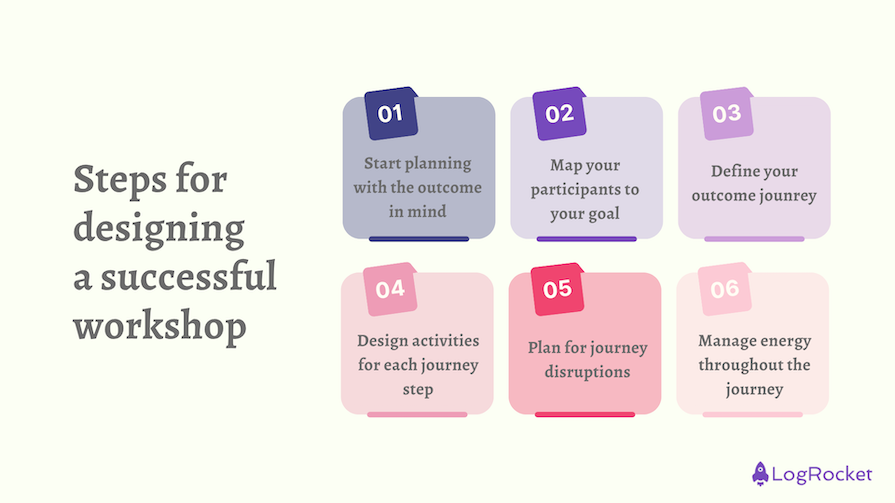
We start by asking ourselves: “What exactly do I need to walk out of this room with?”
Your outcome determines everything else.
Don’t start with “Let’s do some brainstorming.” Start with “We need three validated concepts to test next quarter.”
Now that you’ve established your outcome, who has the expertise you need? Who has the authority to make decisions? Who’ll need to implement whatever you decide?
In my experience, stakeholders fall into one of these four categories:
You need different combinations for different goals.
Now that you have your outcome in mind, you need to define the steps you need your participants to take to achieve your goals. Remember, you’re not planning activities now, you’re thinking about the WHAT, not the HOW.
Start by asking: What journey do people need to go through to reach your outcome?
For example, if you need stakeholder alignment on priorities:
Irrespective of the journey, each workshop should start and end the same:
Next, you pick activities for each step — but they should be specifically chosen to move people through your mapped journey.
The key is matching the activity type to what people need to do mentally and emotionally at that specific point in the journey:
| Goal | Activities you can use |
| Alignment | Use individual work (post-up) first, then group discussion.
Silent read of background materials, followed by Q&A to surface assumptions |
| Creative | Prime thinking with examples and mindsetters, then generate individually:
|
| Decision/prioritization steps |
|
| Commitment |
|
| Consensus building |
|
People won’t always follow your planned journey. Energy will drop. Someone will derail the conversation. A breakthrough insight will emerge.
Go mentally through your journey and for each activity map what could go wrong, then think of alternative approaches. You can find a list of potential disruptions in the table below:
| Disruption Type | Disruption | Alternative |
| Time | CEO shows up 30 minutes late | Have 20 minute versions for each exercise |
| Meeting runs over | Prepare “parking lot for next steps” wrap-up format | |
| People arrive scattered over 15 minutes | Design opening activity that works for latecomers | |
| Energy | Energy drops after lunch | Switch to movement-based activities or small group work |
| People seem checked out | Take unexpected break or pivot to interactive exercise | |
| Too much talking, not enough doing | Force silent individual work before any discussion | |
| Content | Someone derails with off-topic concerns | Use parking lot, acknowledge concern, promise follow-up |
| Group gets stuck debating one point | Set timer, agree to disagree or break into smaller groups | |
| People challenge the workshop premise | Address directly, adjust scope, or pivot objectives | |
| Personality | Someone dominates discussion | Use structured turn-taking or silent brainstorming |
| Quiet people aren’t participating | Create small groups breakouts or written input methods | |
| Skeptic questions everything | Give them specific role (devil’s advocated) or offline conversation | |
| Unexpected insights | Breakthrough idea emerges | Extend time for that discussion, capture fully before moving on |
| Major assumption gets challenged | Pause to address, may need to restart with new framing | |
| Technical | Miro crashes / tech fails | Have physical backup (sticky notes, flip charts) |
| Remote participants can’t engage | Prepare alternative participation methods |
Like any user experience, people have attention limits and emotional capacity. Design your journey with energy management in mind:
The key difference? You’re not running a workshop — you’re guiding people through a transformation journey that ends with your desired outcome.
I firmly believe that the golden rule of spending mindful, focused time prepping for a workshop is even more important than the workshop itself. In some cases it may take almost the same time to prep as the length of your workshop, and here’s why.
While it may be tempting to dive straight into workshop design, there’s critical prep work that separates successful facilitators from formula followers.
Before you design a single activity, understand who’s coming. What are their priorities? What’s their expertise level? Where might they resist?
From my experience, I spend time on LinkedIn, check recent project updates, and sometimes do quick informal chats. Technical stakeholders need different framing than business stakeholders. A marketing director approaches prioritization differently than an engineering manager.
Generic icebreakers kill workshops before they start. “Two truths and a lie” doesn’t prepare people to think about product strategy.
You can use AI to generate custom icebreakers that actually relate to your workshop goal and audience context, rather than relying on generic team-building exercises.
For decision-making workshops, everyone needs the same baseline understanding before you start. Send background materials 48 hours ahead. Include relevant data, case studies, or context documents.
Don’t make people learn about the problem during the workshop. Use workshop time for thinking and deciding, not information transfer.
From my experience, there are two strategic ways product managers should be thinking about workshops — not as generic “sticky note factories” but as specific tools for different outcomes:
So let’s look at how to approach each one.
These workshops help with feature prioritization, resource allocation, strategic trade-offs where you need multiple stakeholder perspectives but can’t debate forever. You have options, you have stakeholders with different priorities.
The challenge isn’t generating more ideas — it’s getting aligned on what to do next. You’re designing for decision-making, not discussion.
Here’s what to consider:
What you walk out with:
A prioritized list with clear ownership, timeline commitments, and documented rationale that everyone understands and can commit to implementing.
Use this for major product pivots, process changes, organizational transformations where you need genuine buy-in, not just compliance. When you’re about to change how things work or are about to embark on a change journey.
The challenge isn’t convincing people it’s a good idea — it’s getting them to actively contribute to making it successful. You’re designing for ownership, not just acceptance.
Here’s what to consider:
What you walk out with:
Shared understanding of the change vision, individual commitment levels, and a concrete action plan with owners.
But here’s the critical part — you have to follow through. Check in regularly, celebrate early wins, and address obstacles as they emerge.
So you’ve run a great workshop. You’ve energized people, made decisions, and captured concepts. Now what?
This is where most workshops fail. Not in the room, but in the follow-through.
Document everything. Not just the final decisions, but the reasoning behind them. Include photos of boards, key quotes, and dissenting views.
Send a comprehensive summary to all participants. Clarify next steps with specific owners and deadlines.
Address any important items from your parking lot. These often contain the seeds of future problems if ignored.
For decision workshops, document the decision rationale and track implementation. Monitor for resistance and address it quickly.
With change management workshops, track commitment levels over time. Identify change champions and support them. Celebrate early wins publicly.
How do you know if your workshop actually worked?
Here are three measurement timeframes from my experience:
Don’t just measure whether people liked the workshop. Measure whether it achieved your strategic outcome.
I have a challenge for you: Next time you need to run a workshop, don’t start by looking for templates.
Start by asking yourself:
Then, design your approach around those answers.
Yes, this takes more work than copy-pasting a template. But it’s the difference between running activities and achieving outcomes.
The best PMs don’t just facilitate workshops — they design transformation journeys that move their product and organization forward.
Featured image source: IconScout
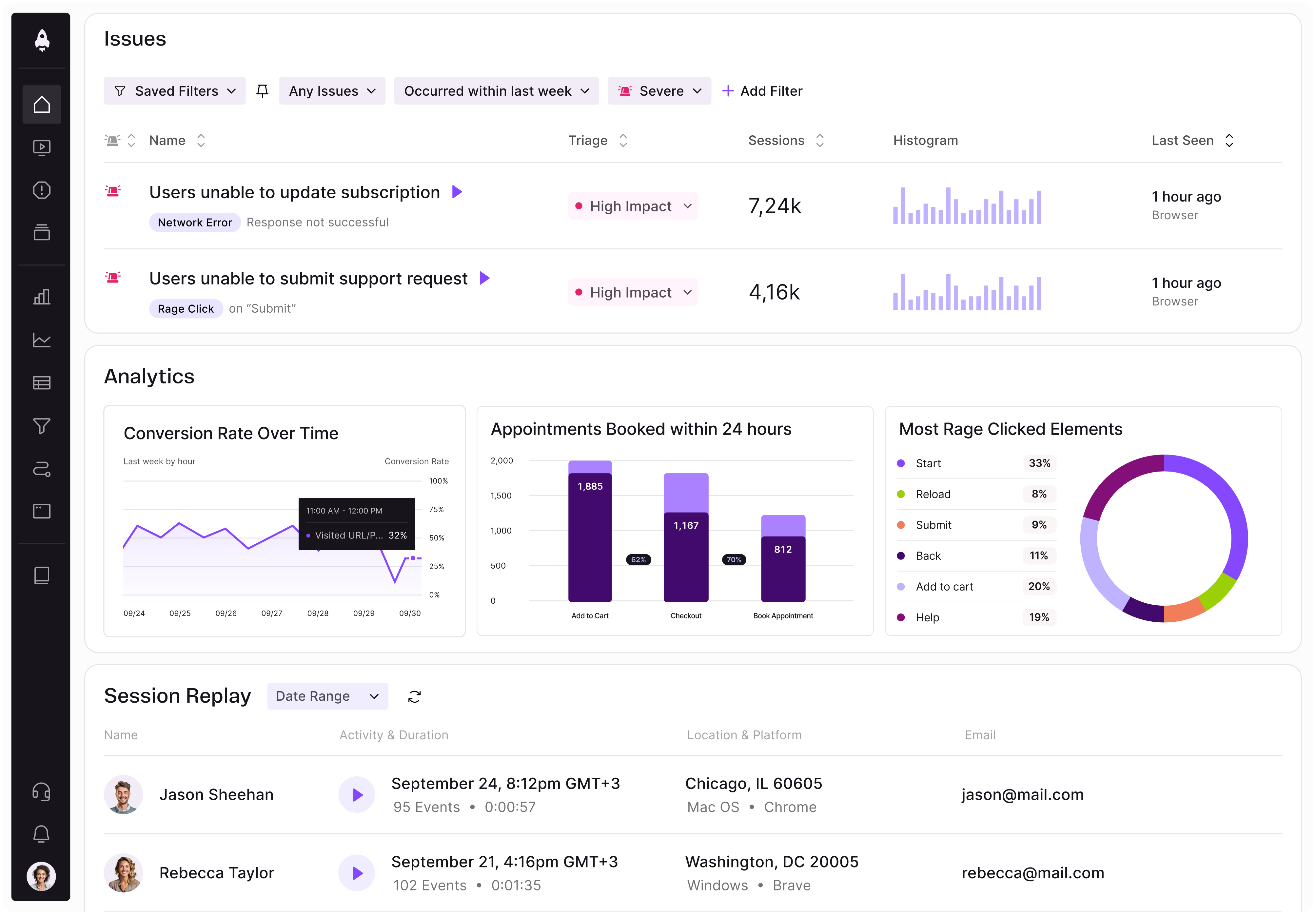
LogRocket identifies friction points in the user experience so you can make informed decisions about product and design changes that must happen to hit your goals.
With LogRocket, you can understand the scope of the issues affecting your product and prioritize the changes that need to be made. LogRocket simplifies workflows by allowing Engineering, Product, UX, and Design teams to work from the same data as you, eliminating any confusion about what needs to be done.
Get your teams on the same page — try LogRocket today.
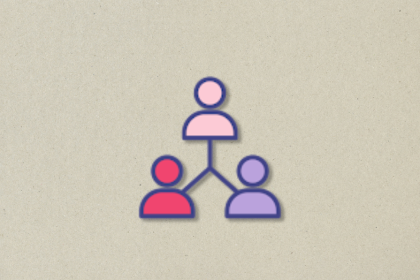
Most teams fail at autonomy. Learn how clear rules help product teams move faster without micromanagement.

A practical framework for PMs to use AI in ideation without sacrificing judgment, strategy, or decision quality.
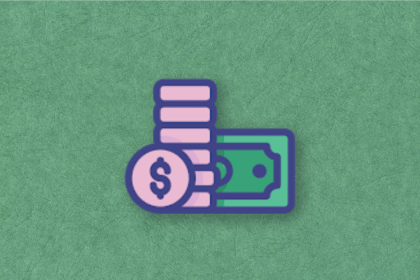
A practical five minute revenue estimation method to help product managers compare ideas, drop low impact features, and prioritize smarter.
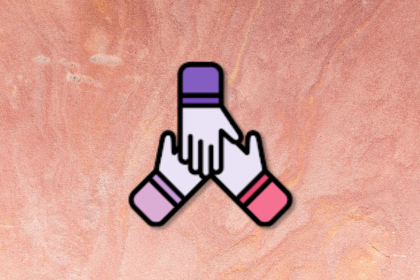
A practical guide for PMs who want to stop being bottlenecks, delegate smarter, and lead teams effectively with a clear ownership framework.